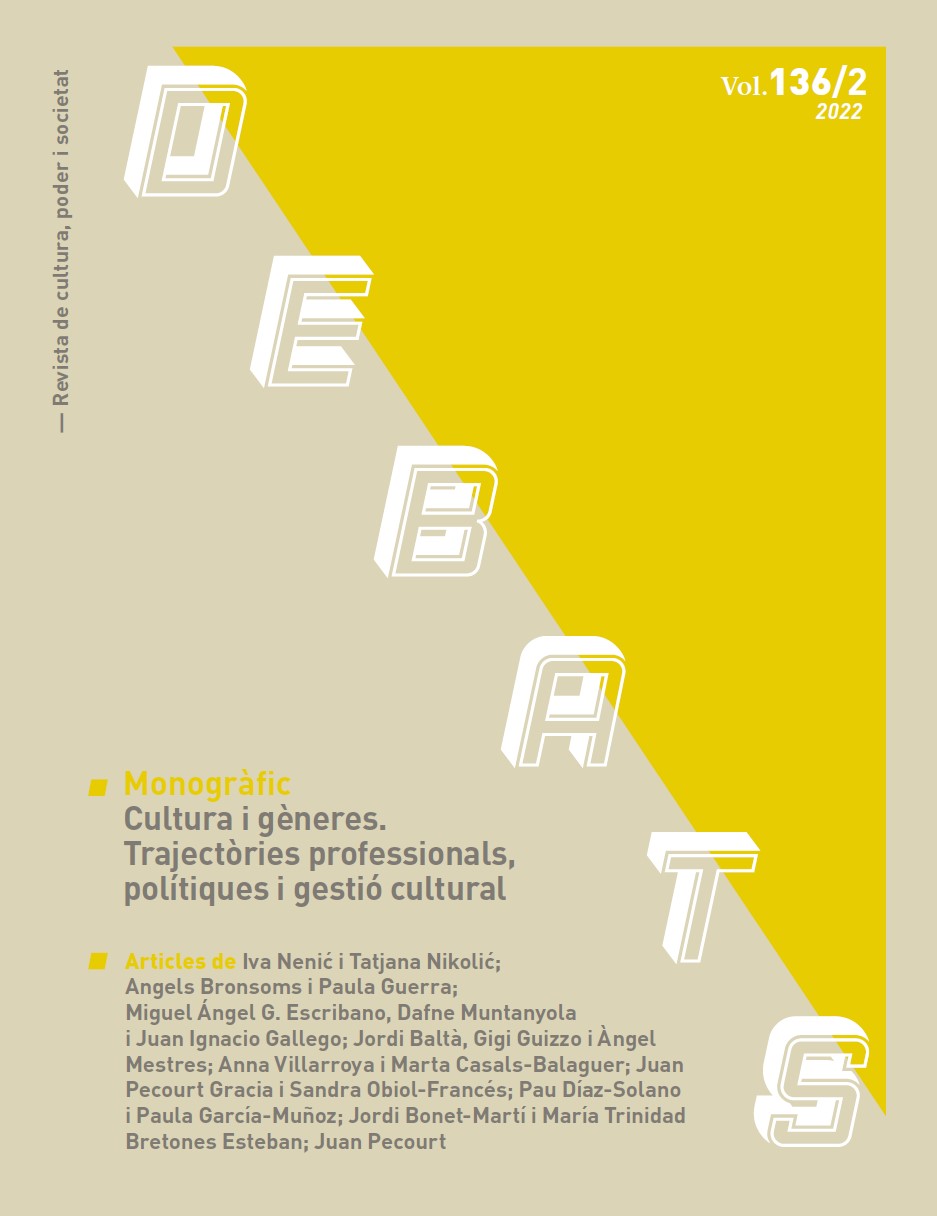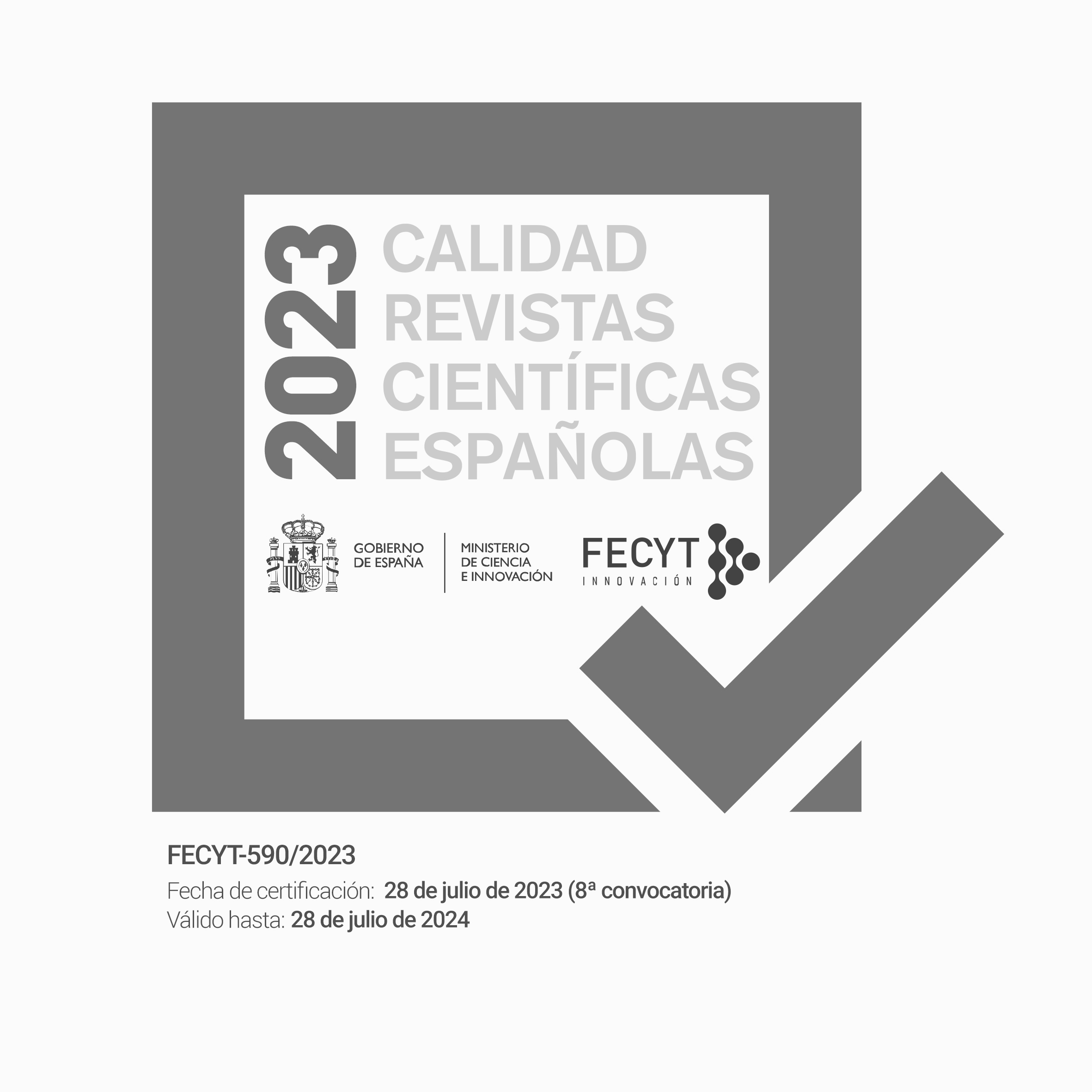Female labor and leadership in music
Contexts, constraints, future(s)
DOI:
https://doi.org/10.28939/iam.debats-136-2.1Keywords:
women in music, gender stereotypes, gender equality, cultural management, cultural policy, independent music sceneAbstract
Here we explore the contemporary practices of female participation in the music scenes in Serbia, and to an extent, in the Balkans. This research identified and described the possibilities, gendered constraints, and acts of transgressions that together weave a complex dynamic of female participation in popular music, in relation to the changing field of dominant gender ideologies in Serbia and the surrounding region. This work provides a critical analysis of gender issues in music-making and performing and of the topic of gendered labour in music, by relying on multiple case studies grounded in local contexts. We consider the mores and demands of the music market and everyday culture, their link to personal experiences, and the reach of the social institutions regarding music.Either as role models or cherished leaders, female musicians employ different tactics to fight stereotypes, strengthen communities, and ensure female participation. This work maps the strategies and tools they have been putting in place in order to sustain their audience, income, and presence to the best possible extent. Bearing in mind the imperative of transforming a standard way of working, communicating with audiences, and maintaining earning potential, this text singles out practices that could be recognised as (female) leadership in contemporary circumstances. We also consider a wider spectrum of roles that female musicians and music professionals have taken on or were awarded within their professional circles, local scenes, communities, or wider society.
Downloads
References
Ambrozić, D. (1991). Žene u rocku kod nas? Ispada da su značajnije Magi i Anja nego mi, koje smo cela grupa [Women in our Rock? It seems that Magi and Anja are more important than us, who are a group]. Ritam, March 1991. Yugopapir online archive. http://www.yugopapir.com/2016/03/boye-zene-u-rocku-kod-nas-ispada-da-su.html
Baltà Portolés, J., Dragićevic Šešić, M. (2017). Cultural rights and their contribution to sustainable development: implications for cultural policy. International Journal of Cultural Policy, 23:2, 159-173. http://dx.doi.org/10.1080/10286632.2017.1280787
Banić, S., Gojić, N. (2018) Kako žive umjetnice? [How do female artists live?] Prostor Plus: Rijeka. https://drive.google.com/file/d/16XLogjHZGytlhwasjJoZ3ttNpDVxcQFH/view
Barada, V., Primorac, J. (2014). Non-Paid, Under-Paid and Self-Exploiting Labour as a Choice and a Necessity: Example of Women in Creative Industries. In M. Adamović, B. Galić, A. Gvozdanović, A. Maskalan, D. Potočnik & L. Somun Krupalija (Eds.), Young Women in Post-Yugoslav Societies: Research, Practice and Policy (pp. 143-166). Institute for Social Research in Zagreb.
Caust, J. (2020). Arts Leadership in Contemporary Contexts. Routledge, Taylor & Francis Group.
Ceribašić, N. (2001). In between ethnomusicological and social canons: historical sources on women players of folk music instruments in Croatia. Narodna umjetnost-Hrvatski časopis za etnologiju i folkloristiku, 38(1), 21-40.
Diamond, B., Moisala, P. (2000). Introduction. Music and Gender: Negotiating Shifting Worlds. In P. Moisala, B. Diamond (Eds.), Music and gender. Urbana: University of Illinois Press, pp. 1-19.
Doubleday, V. (2008). Sounds of power: An overview of musical instruments and gender. Ethnomusicology Forum 17(1), 3-39.
Downing, S. L. (2010). Agency, leadership, and gender negotiation in Balinese girls’ gamelans. Ethnomusicology 54(1), 54-80.
Edelman, D., Green, J. (2017). The mind of the artist / the mind of the leader: what neuroscience can teach us about the training of arts managers and leaders. ENCATC Journal of Cultural Management and Policy, 7 (1), 17-26.
Hanash Martínez, M. (2020). Feminist Cyber-resistance to Digital Violence: Surviving Gamergate. Debats. Journal on culture, power and society, 5, 287–302. https://doi.org/10.28939/iam.debats-en.2020-17
Herndon, M., & Ziegler, S. (Eds.) (1990). Music, gender, and culture. Wilhelmshaven, Germany: Florian Noetzel Verlag.
Hofman, A. (2015). Music (as) Labour: Professional Musicianship, Affective Labour and Gender in Socialist Yugoslavia. Ethnomusicology Forum, 24, 1, 28-50. https://doi.org/10.1080/17411912.2015.1009479
Homan, S. (2013). From Coombs to Crean: popular music and cultural policy in Australia. In Homan, S., Cloonan, M., Cattermole, J. (Eds.) Popular Music and Cultural Policy. Routledge, Taylor & Francis: London and New York, pp. 108-125. International Journal of Cultural Policy, 19 (3), 382-398. https://doi.org/10.1080/10286632.2013.788164
Jovićević, J. (2021). The Pale Image of the Jazz Female Instrumentalists in Southeastern Europe. In Herzig, M., Kahr, M., and Reddan, J. (Eds.) Handbook of Jazz and Gender, Routledge (in preparation).
Koskoff, E. (Ed.) (1987). Women and music in cross-cultural perspective. Vol. 79. Urbana: University of Illinois Press.
Koskoff, E. (2000). Foreword. In Moisala, P., and B. Diamond (Eds.) Music and gender. Urbana: University of Illinois Press, pp. ix-xiii.
Ljubičić, V. (2014). Discrimination of Young Women in the Croatian Labour Market. In Adamović, M., Galić, B., Gvozdanović, A., Maskalan, A., Potočnik, D., Somun Krupalija, L. (Eds.) Young Women in Post-Yugoslav Societies: Research, Practice and Policy. Institute for Social Research in Zagreb, pp. 113-142.
Martić Kuran, L., Mečev, D. (2018). Characteristics of successful women in creative industries. Journal of Business Paradigms, 3 (1), 4-18.
Medina-Vicent, M. (2019) Woman, manage your life! The Life-Work Balance Discourse in Popular Management Literature Aimed at Women. Debats. Journal on culture, power and society, 4, 59–70. https://doi.org/10.28939/iam.debats-en.2019-5
Moisala, P. (1999). Musical gender in performance. Women & Music, p. 1. Gale Academic OneFile, accessed 15 May 2021.
Negus, K. (2019). Nation-states, transnational corporations and cosmopolitans in the global popular music economy. Global Media and China: Special Section - Asian Popular Music: Transnationality and Globalization 4(4), 403-418.
https://doi.org/10.1177/2059436419867738
Nenić, I. (2012). Sviračice kao loši subjekti [Female instrumentalists as bad subjects]. In Duhaček, D., Lončarević, K. (Eds.) Kultura, rod, građanski status. Centar za studije roda i politike, Fakultet političkih nauka: Beograd, pp. 143-155.
Nenić, I. (2013). Discreet cases: Female traditional music players in Serbia. New Sound, 41, I/2013, 87-97.
Nenić, I. (2015). We are not a female band, we are a band! Female performance as a model of gender transgression in Serbian popular music. Musicology: Journal of the Institute of Musicology of the Serbian Academy of Sciences and Arts, 19, 119-133.
Nenić, I. (2019). Guslarke i sviračice na tradicionalnim instrumentima u Srbiji: identifikacija zvukom [Gusle players and other female traditional instrumentalists in Serbia: identification by sound]. CLIO: Beograd.
Nikolić, T. (2016). Rodni odnosi na alternativnoj muzičkoj sceni Srbije i regiona [Gender relations within the alternative music scene of Serbia and the region]. Pokrajinski zavod za ravnopravnost polova: Novi Sad.
Nikolić, T. (2017) Učešće i položaj žena u stvaranju muzike u bivšoj Jugoslaviji. [Participation and the position of women in creating music in former Yugoslavia]. Zbornik završnih radova studenata 2015/2016 i 2016/2017. Beogradska otvorena škola, pp. 115-124.
Nikolić, T. (2019) Umetnički projekti sa migrantkinjama u Srbiji - pitanja kulturnog i rodnog identiteta. [Art projects with female migrants in Serbia - the question of cultural and gender identity]. Interkulturalnost: časopis za podsticanje i afirmaciju interkulturalne komunikacije, 18, 84-95.
Nikolić, T. (2020). Društveni angažman mladih umetnica u digitalnom kontekstu. [Social engagement of young female artists in the digital context]. Kultura: časopis za sociologiju i teoriju kulture i kulturnu politiku, 169, 86-112.
Price, J. (2017). The construction of cultural leadership. ENCATC Journal of Cultural Management and Policy, 7 (1), 5-16.
Ranković, S. (2019). Tradicionalno pevanje Srba iz Hrvatske u svetlu savremenih etnomuzikoloških istraživanja. [The Traditional Singing of Serbs from Croatia in the Light of Contemporary Ethnomusicological Research]. In Stanišić, S. (Ed.), Baština krajiških Srba. Novi Sad: Zavičajno udruženje “Sava Mrkalj”, pp. 133-173.
Santos Ortega, A., Muñoz Rodríguez, D. (2019). The cult of the entrepreneur within the EU framework: The advance of an entrepreneurship activation model. Debats. Journal on culture, power and society, 4, 13–24. https://doi.org/10.28939/iam.debats-en.2019-2
Shaw, K. (2013). Independent creative subcultures and why they matter. In Homan, S., Cloonan, M., Cattermole, J. (Eds.) Popular Music and Cultural Policy. Routledge, Taylor & Francis: London and New York, pp. 59-79. International Journal of Cultural Policy, 19 (3), 333-352. https://doi.org/10.1080/10286632.2013.788162
Slobin, M. (1993). Subcultural sounds: Micromusics of the West. Hanover and London: Wesleyan University Press.
Starratt, R. J. (1993). The drama of leadership. London: Falmer Press.
Street, J. (2013). Music, markets and manifestos. In Homan, S., Cloonan, M., Cattermole, J. (Eds.) Popular Music and Cultural Policy. Routledge, Taylor & Francis: London and New York, pp. 7-24. International Journal of Cultural Policy, 19 (3), 281-297. https://doi.org/10.1080/10286632.2013.788158
Sutherland, R. (2013). Why get involved? Funding reasons for municipal interventions in the Canadian music industry. In Homan, S., Cloonan, M., Cattermole, J. (Eds.) Popular Music and Cultural Policy. Routledge, Taylor & Francis: London and New York, pp. 92-108. International Journal of Cultural Policy, 19 (3), 366-381. DOI:10.1080/10286632.2013.788160
Tomšič, V. (1981). Žena u razvoju socijalističke samoupravne Jugoslavije. [A Woman in the Development of the Socialist Self-Management Yugoslavia]. Beograd: Novinsko-izdavačka radna organizacija Jugoslovenska stvarnost — OOUR Jugoslovenski pregled. AFŽ Archive, visited 15th May 2021. http://afzarhiv.org/items/show/382
Todorović, M. (2013). Benevolentni seksizam i rodna ravnopravnost. [Benevolent Sexism and Gender Equality] Genero: časopis za feminističku teoriju i studije kulture, 17, 1-22.
Troka, D. (2002). You heard my gun cock: Female agency and aggression in contemporary rap music. African American Research Perspectives 8, pp. 82-9.
Wells, S. E. (2011). Women as Musical Leaders: Experiences and Perceptions of Female Conductors and Concert Masters in Perth, Western Australia. Master thesis. Perth: School of Music, University of Western Australia.
Downloads
Published
How to Cite
Issue
Section
License
Without prejudice to the provisions of article 52 of Spanish Law 22/1987 of November 11 on Intellectual Property, BOE (official state bulletin) of November 17, 1987, and pursuant to said legislation, the author(s) surrender(s) free of charge its rights of edition, publication, distribution and sale of the article, for its publication in Debats. Journal on Culture, Power and Society.
Debats. Journal on Culture, Power and Society is published under the Creative Commons license system in accordance with the «Recognition - Non-Commercial (by-nc) modality: The generation of derivative works is permitted provided that commercial use is not made. Nor can the original work be used for commercial purposes».
Thus, when the author submits his/her contribution, he/she explicitly accepts this assignment of publishing and publishing rights. Authors also authorize Debats. Journal on Culture, Power and Society to include their work in an issue of the journal to be distributed and sold.











